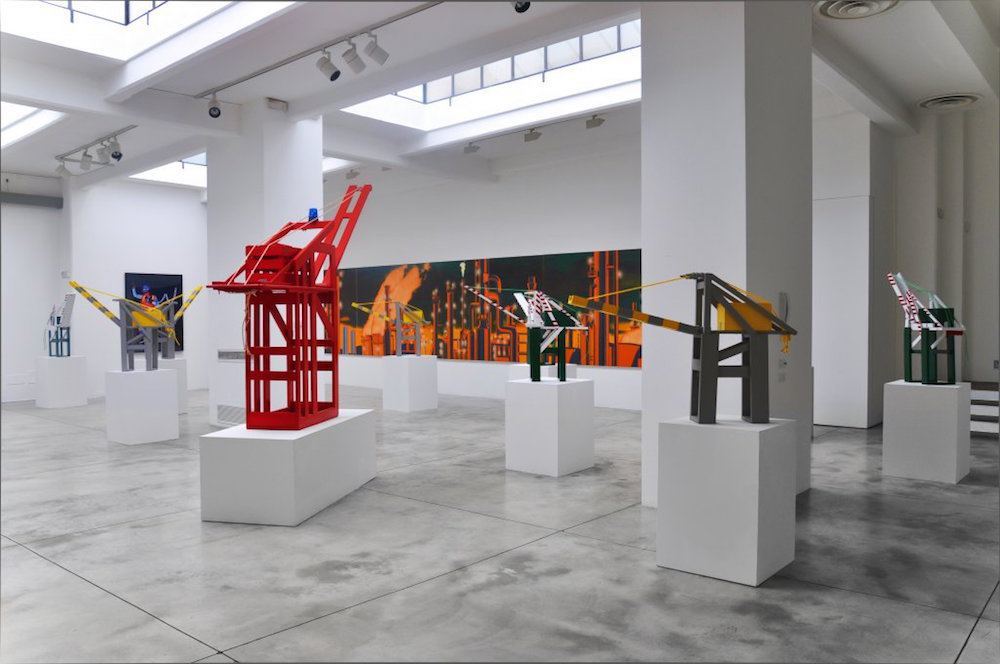JOE LA PLACA
JOE LA PLACA'S
LEADING CULTURE DESTINATIONS:
JOE LA PLACA is one of the unsung heroes of the contemporary art world. A friend and confidante to the iconic likes of keith haring and basqiuat, the new-york-born curator and collector began his career In the early 80s, arranging radical street-art activations, and now advises some of the world’s top collectors. AS A YOUNG MAN, he studied art history and fine art under Donald Kuspit and Joseph Kossuth, aND worked as an assistant for many artists, including Julian Schnabel. He went on to work for three major New York galleries (Leo Castelli, Sperone Westwater and Fischer, and Annina Nosei) before opening his own in 1983. currently the Director of the Cardi GallerY, London, La Placa was formerly CEO of All Visual Arts (AVA), a radical arts funding partnership founded with Michael Platt (CEO Bluecrest Capital Management), for whiCH he curated 62 exhibitions world-wide. Last year, he worked as the chief advisor on Jean Michel Basquiat: Boom for Real, a major retrospective of the artist’s work at the Barbican Museum in London, which broke attendance records. Here, the 2018 LCD Select Jury Member tells us why HE BELIEVES ART TO BE IMPERATIVE TO HUMAN SURVIVAL AND EXPLAINS WHY IN THE FUTURE, ANDROIDS may truly DREAM OF ELECTRIC SHEEP.
If there was one piece of art you could feature in, which one would it be and why?
I would want to be the webs of a Jackson Pollock painting – infinitely expanding through the galaxies to places no man has gone before.
How do you believe museums will impact future cities?
Art and Museums have slowly replaced organised religion and churches. The architectural splendour and huge budgets spent on new museums, such as The Louvre Abu Dhabi, are akin to the cathedrals that came before them. These new temples of transcendence through art, where people from all social classes connect with each other on a deeper philosophical and spiritual level, function in much the same way as places of worship.
What is your favourite cultural destination?
Throughout history, art has been used as a form of détente – Peter Paul Rubens was an ambassador as much as he was an artist, bridging the divide between warring countries through culture. Today, there’s nothing more important than East-West relations – for two very distinct cultures begin to understand each other in fundamental ways. The recent boom of Western galleries in Hong Kong, the bridge to the mainland Chinese market, and private foundations in Shanghai, like the Yuz Foundation, are helping close the gap between the world’s two biggest superpowers.
Who do you think are the cultural innovators of tomorrow?
Artists, neuroscientists, computer scientists specialising in AI and big data, along with the pioneers of virtual reality, will merge and become the cultural innovators of tomorrow. Neuroscientists now have a telescope into how the human brain functions like never before – this combined with behavioural data and the new landscape of the virtual reality, the hyperrealisation of the Greek concept of Mimesis, will cause a collapse of what has classically been thought of as separate disciplines in the arts and humanities. What will emerge is a hybrid form of creator that will birth a new form of culture. It will be a brave new world, not unlike the visions of Philip K. Dick IN ‘DO ANDROIDS DREAM OF ELECTRIC SHEEP’.
WHAT IN YOUR OPINION ARE THE MOST IMPORTANT ACTIVATIONS IN ART RIGHT NOW?
Shanghai and Hong Kong are the two most exciting new cultural destinations in my book. Shanghai has gone through one of the greatest urban transformations I’ve ever witnessed, and will continue to evolve as a gateway to China. As I said before, there is no more important form of Détente than for East and West, two very distinct mindsets, to begin to understand each other, not just politically, but on a much deeper emotional level that only art can procure.
What for you is the ultimate purpose of art?
Back in 2010 I co-wrote a book on how to battle chronic stress – Phantom Stress –based on the work of my friend, the clinical psychiatrist Dr. Phillip Romero. It was all about how chronic stress destroys relationships and destroys the immune system. I came to the conclusion that art was imperative to human survival because a world without art is one IN which you’d die of chronic stress. Art helps us adapt to adversity: The making and breaking of emotional attachments; shame; what it is to be a man or woman; what it is to be human and the big one… death. It’s all detailed in The Art ImperativE.




